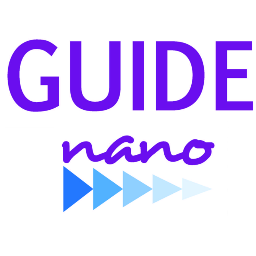Integration of Databases into Risk Assessment Tools: Collaboration Meeting of Nanosafety Cluster Projects
The Integration of Databases into Risk Assessment Tools is becoming a trending topic. Software Tools are under development in several Nanosafety projects for the risk/ hazard/ exposure assessment of nano-enabled products. Tools are mainly focused on guiding the user (nanomaterial producers, manufacturers, consumers, workers, insurance companies, regulators, policy makers) to assess the risks associated with nano-enabled products at all the stages of their life cycle, including recommendations to implement the most appropriate risk mitigation strategies ensuring human health and environmental safety.
Several European research projects in the field of nanosafety put together some efforts to harmonise nanosafety-related Tools (RA Tools, Nanodefinition Tool, Hazard Tools, Exposure Tools). The first meeting to initiate discussions was organised in Leiden (16/09/2015) between GUIDEnano, SUN, NANoREG and NANODEFINE, with the intention to extend to other projects in the next meeting.
The common issue shared by all the aforementioned projects was ontology issues and different needs on accessibility to harmonised databases; therefore eNanoMapper was invited to join the meeting to share their approach towards the identified needs.
Tools under development in the aforementioned projects:
- GUIDEnano: A web-based risk assessment Tool covering the hotspots of exposure and hazard important for human and environmental health during the entire nano-enabled products life cycle, including risk management. One of the main parts of the Tool includes the description of the NM form in all its life cycle stages.
- SUN: The SUNDS web Tool covers risk management and sustainability of nano-enabled products along their life cycle. It is based on a Tiered approach including a decision support tool and a risk assessment and control part. It is based on REACH guidelines and focuses on assessment models.
- NANODEFINE: This tool concentrates on the development of an integrated approach based on validated and standardised methods to support the implementation of the EC Recommendation for a definition of nanomaterials. It sources and characterises real world test materials. It is used for the selection of techniques, evaluation of results and classification.
- NANOREG: The project develops a reference framework for the safety assessment of NMs in the REACH context as one of its main goals. The framework contains the following elements: Various guidance principles, among others, 3Rs to minimize animal testing, sustainable development. The framework is focused on REACH, human and environmental health.
- eNanoMapper: The project builds on common components and Application Programming Interfaces (APIs) to address data and models interoperability challenges. It uses semantic technologies to characterize ENMs, link databases and ensure a flexible data model.
The main challenge is the harmonisation of the different Tools (connecting the tools with each other) in order to avoid overlapping and to benefit from synergies.
The first important point is to clearly describe the coverage of the different Tools and their limitations.
The second point is the nanomaterial category definition that needs to be adopted by all the projects to harmonise terminology. Not only in the area of nanomaterial characteristics but also in other areas (hazard, exposure, life cycle activities), the terminology should be the same to ensure possibilities of harmonisation. There is a clear need to increase the ontology efforts in all the areas related to Risk Assessment (nanomaterial properties, hazard, exposure, risk management).
The last point is the real need for harmonised databases in all the above mentioned areas related to risk assessment  data quality control.
Further discussions on database harmonisation an ontoloy will take place in the meeting of the 23rd of November in Brussels at the European Commission.
More information about GUIDEnano on the website or Twitter.

